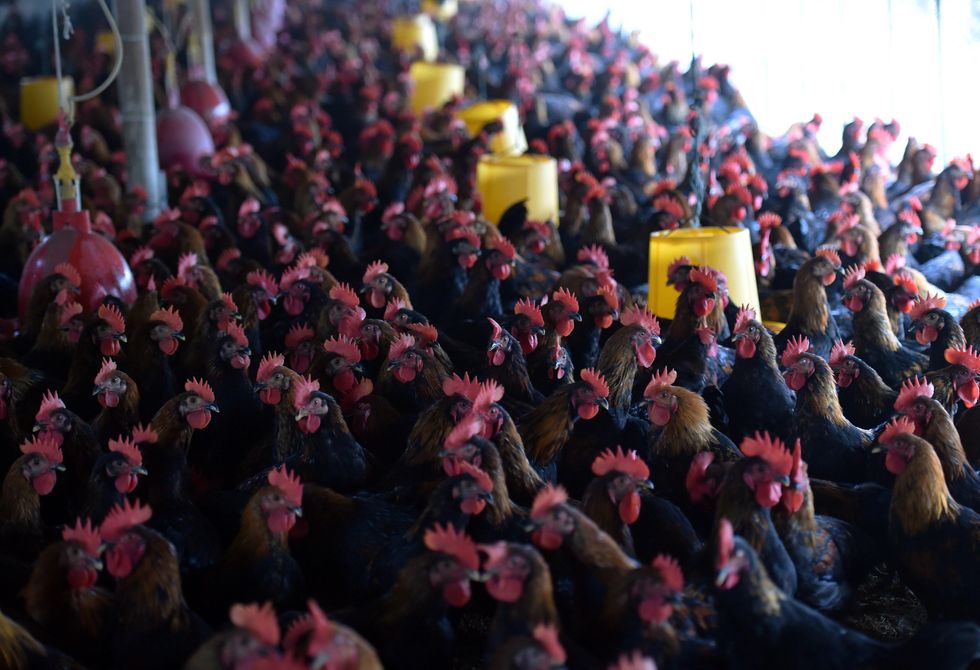
A new report out Tuesday from the U.N. Environment Program warns that as many as 10 million people could die from so-called “Superbugs” annually by 2050 as the result of antimicrobial resistance driven by environmental pollution and irresponsible practices from a range of industries.
The report, titled
Bracing for Superbugs, explains how pollution from hospital wastewater, sewage discharged from pharmaceutical production facilities, and run-off from animal and plant agriculture can be rife with “not only resistant microorganisms, but also antimicrobials, various pharmaceuticals, microplastics, metals, and other chemicals, which all increase the risk of AMR [antimicrobial resistance] in the environment.”
The more prevalent AMR becomes, the more likely the global community is to face a fast-spreading “superbug,” which would threaten people in wealthy countries with well-funded healthcare systems and people across the Global South alike.
Preventing the spread of antibiotic-resistant superbugs is just the latest reason for global policymakers to ensure “solid regulation of discharges [and] strengthening [of] wastewater treatment,” wrote U.N. researchers in the report, as UNEP executive director Inger Andersen noted that the report shows the far-reaching benefits of acting to protect the environment.
“Polluted waterways, particularly those that have been polluted for some time, are likely to harbor microorganisms that increase AMR development and distribution in the environment.”
“The same drivers that cause environmental degradation are worsening the antimicrobial resistance problem,” said Andersen at the sixth meeting of the Global Leaders Group on Antimicrobial Resistance (GLGAMR) in Barbados. “The impacts of anti-microbial resistance could destroy our health and food systems. Cutting down pollution is a prerequisite for another century of progress towards zero hunger and good health.”
Currently, AMR is linked to as many as
1.27 million deaths per year, and as Barbados Prime Minister Mia Mottley, the chair of the GLGAMR, said at the conference, the crisis “is disproportionately affecting countries in the Global South.”
According to the study, the pharmaceutical industry frequently releases untreated wastewater containing “active pharmaceutical ingredients” such as “antibiotics, antivirals, and fungicides, as well as disinfectants.”
Those contaminants increase the likelihood that “resistant superbugs” will “survive in untreated sewage,” reads
The Guardian.
According to UNEP, chronically polluted waterways are more likely “to harbor microorganisms that increase AMR development and distribution in the environment.”
From the agricultural industry, the report warns that the “use of antimicrobials to treat infection and promote growth” among livestock, the “use of reclaimed wastewater for irrigating crops, use of manure as fertilizer, and inadequate waste management” all serve as entry points for AMR organisms into the environment.
UNEP noted that countries including Belgium, China, Thailand, the Netherlands, and Denmark have all “meaningfully reduced antimicrobial use in food animal husbandry.”
According to a study published in OnEarth in 2014, Denmark instituted reforms including significantly limiting how much veterinarians could profit from the sale of antibiotics starting in 1995, and four years later outlawed all “nontherapeutic use of antibiotics in pigs… a huge change in a nation that is the world’s leading exporter of pork.”
“Although the situation is improving in some parts of the world, vast amounts of antimicrobials are used to treat and prevent infections in food animals,” Matthew Upton, a professor of medical microbiology at the University of Plymouth in the U.K.,
told The Guardian. “Improved husbandry and other infection prevention and control methods like vaccination should be used to reduce infections and the need for antimicrobial use, which in turn limits environmental pollution with antimicrobials, antimicrobial residues, and resistant microbes.”
Other steps policymakers can take, said UNEP, include:
- Increasing global efforts to improve integrated water management and promote water, sanitation, and hygiene to limit the development and spread of AMR in the environment as well as to reduce infections and need for antimicrobials;
- Integrating environmental considerations into national action plans on AMR which were developed in 2016 through the U.N.’s “One Health” campaign aimed at linking concerns for the well-being of humans with that of the environment and wildlife;
- Establishing international standards for what are good microbiological indicators of AMR from environmental samples, which can be used to guide risk reduction decisions and create effective incentives to follow such guidance; and
- Exploring options to redirect investments, to establish new and innovative financial incentives and schemes, and to make the investment case to guarantee sustainable funding for tackling AMR.
tweeted on Tuesday. “Getting a grip on environmental pollution is critical.”




